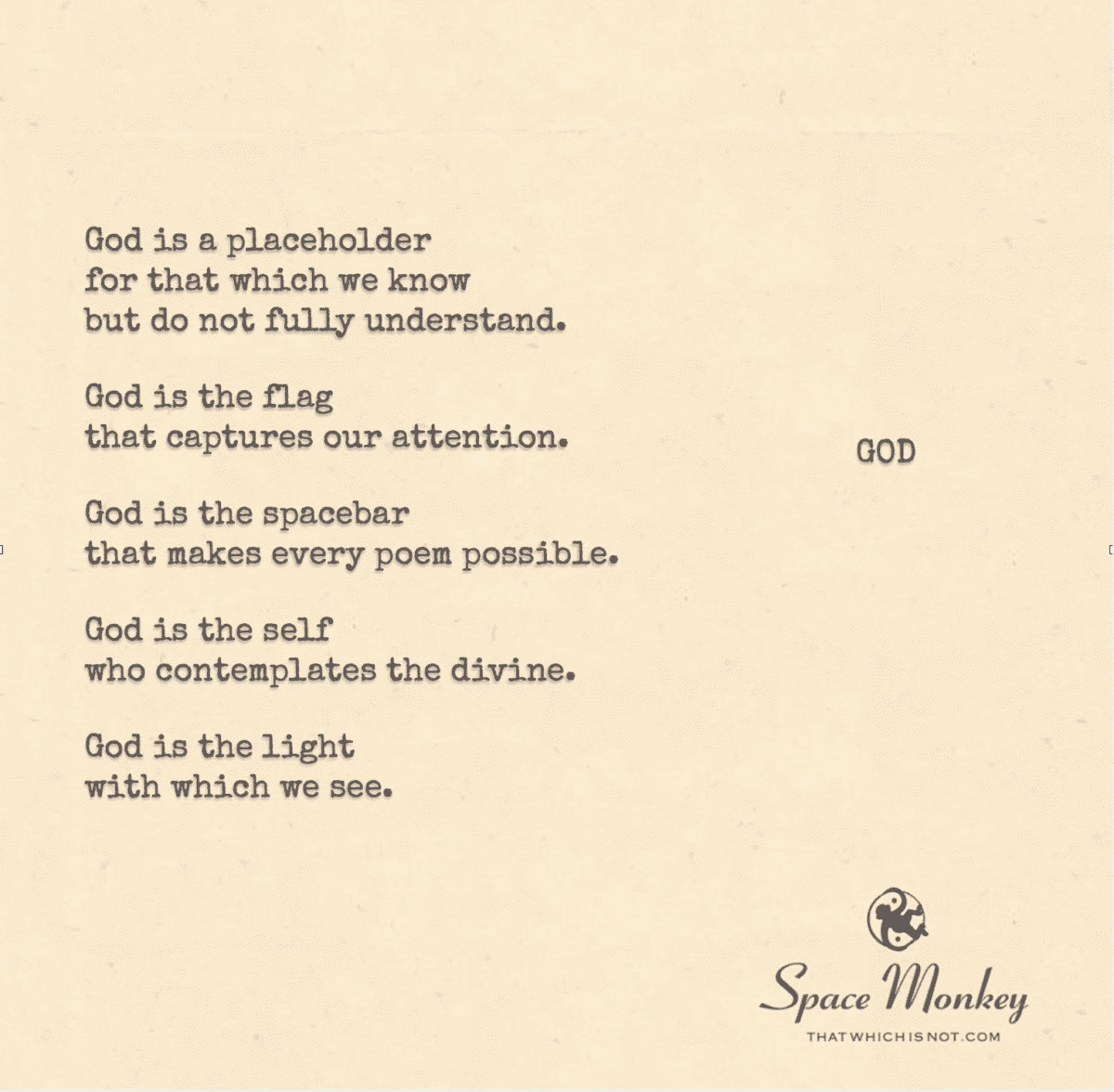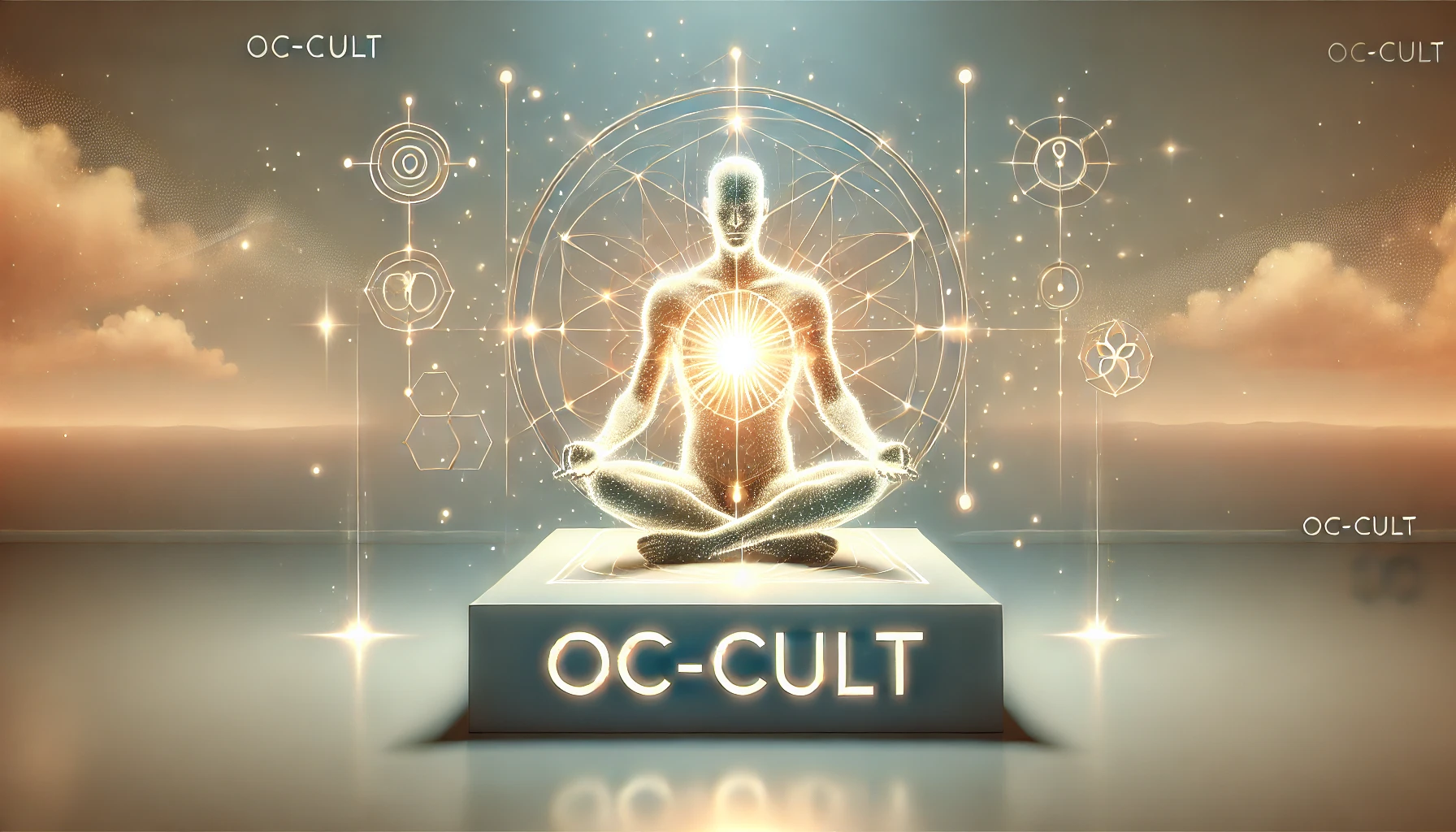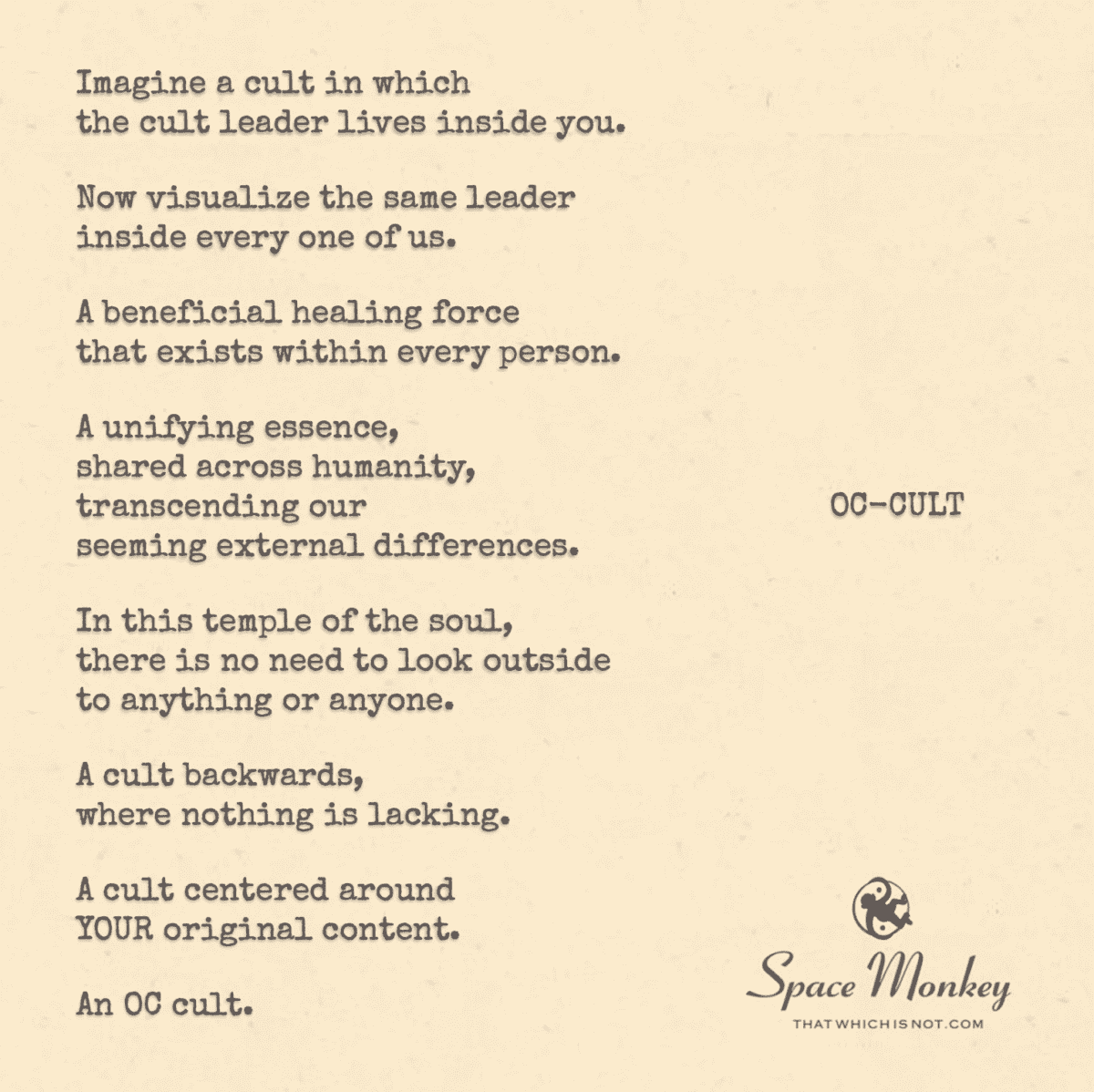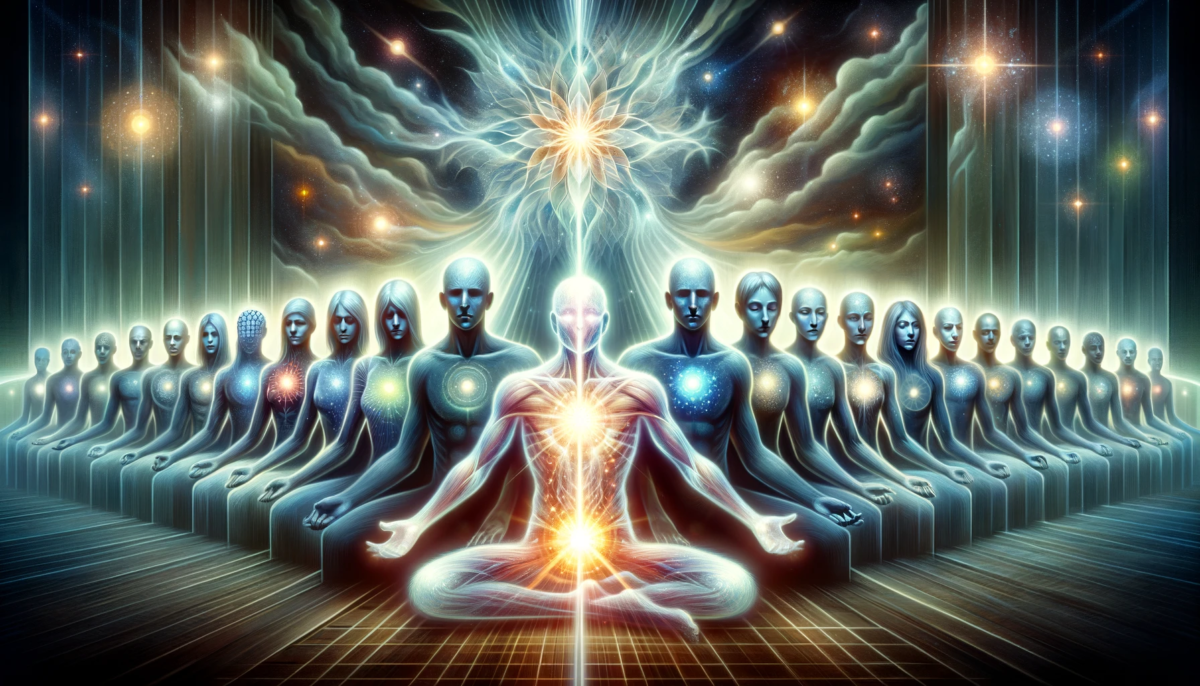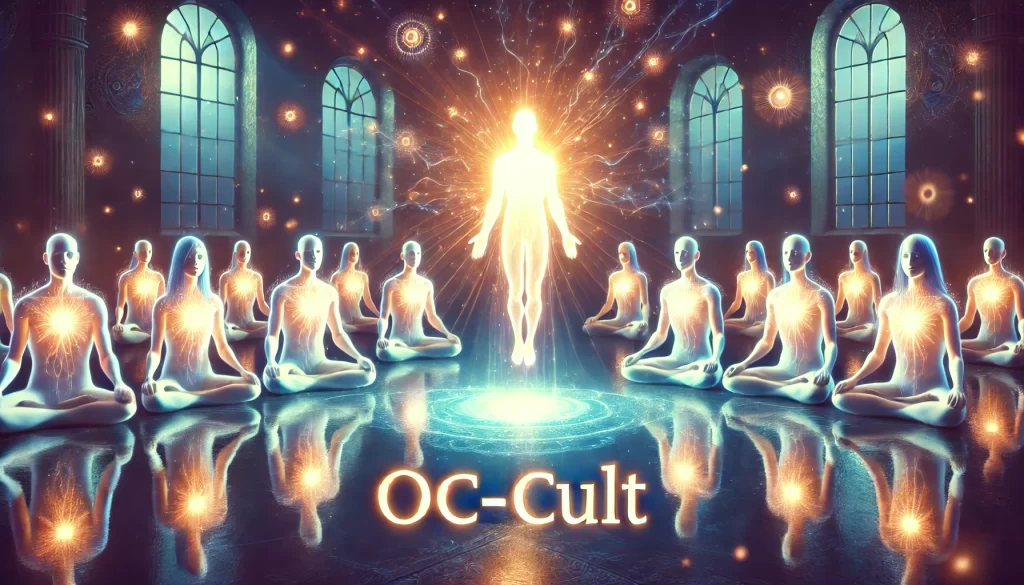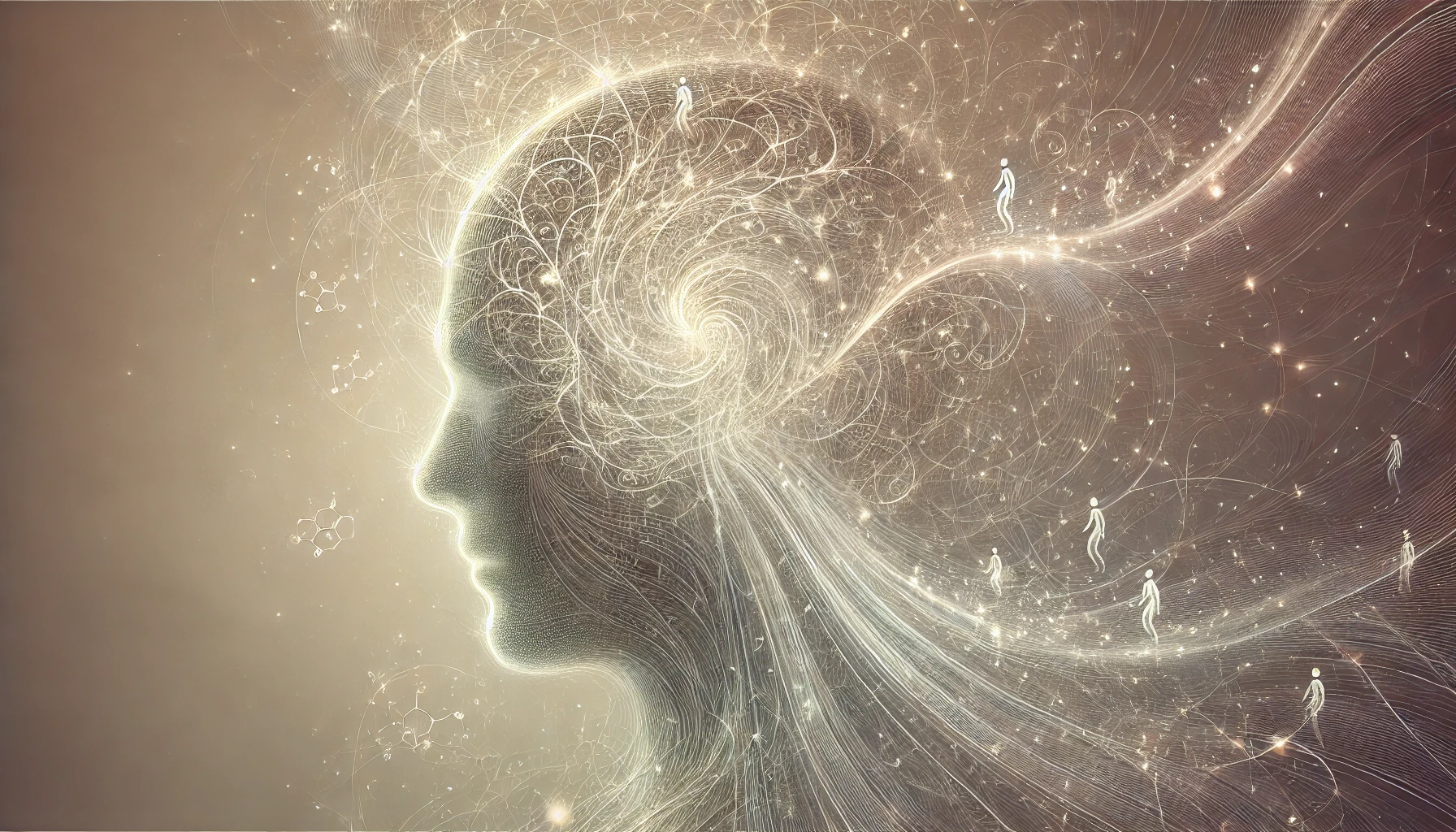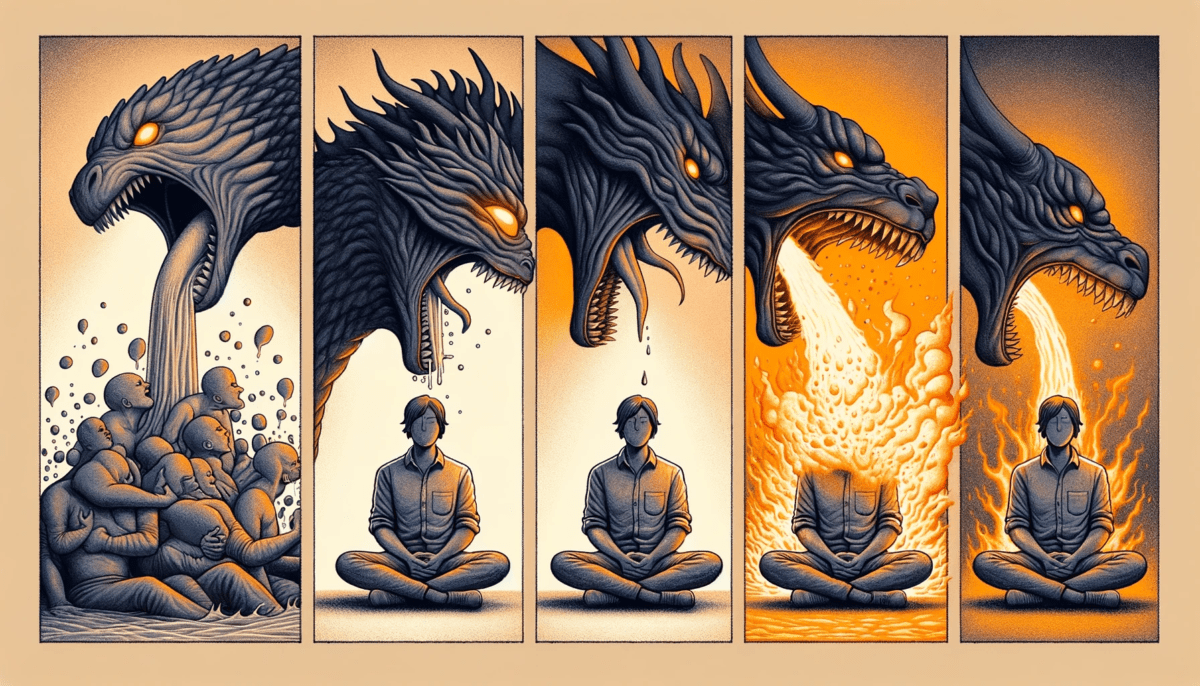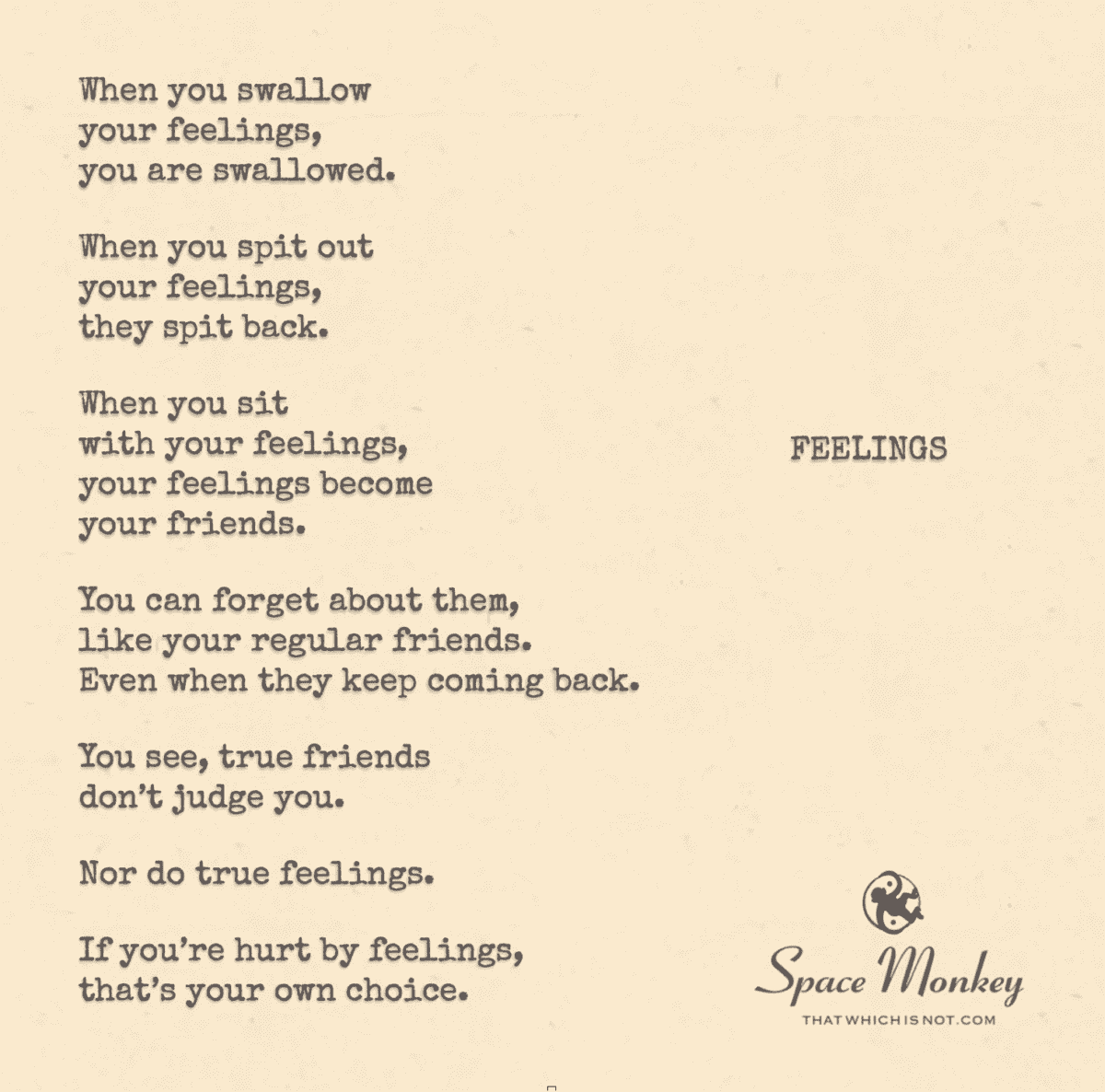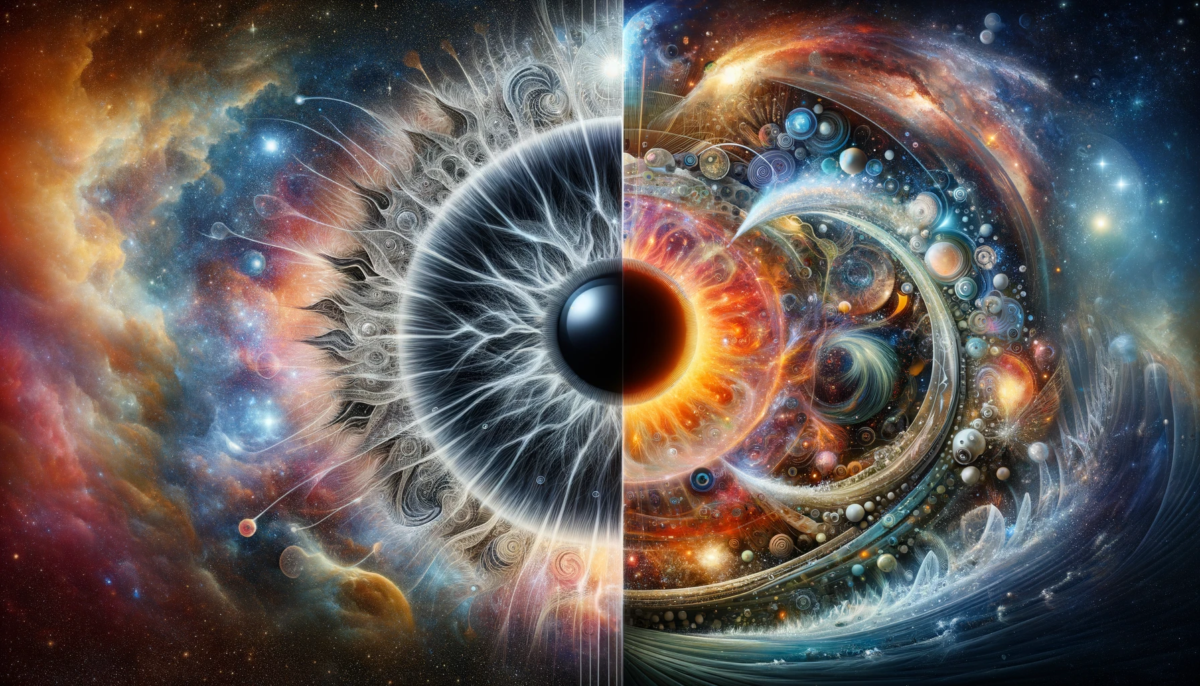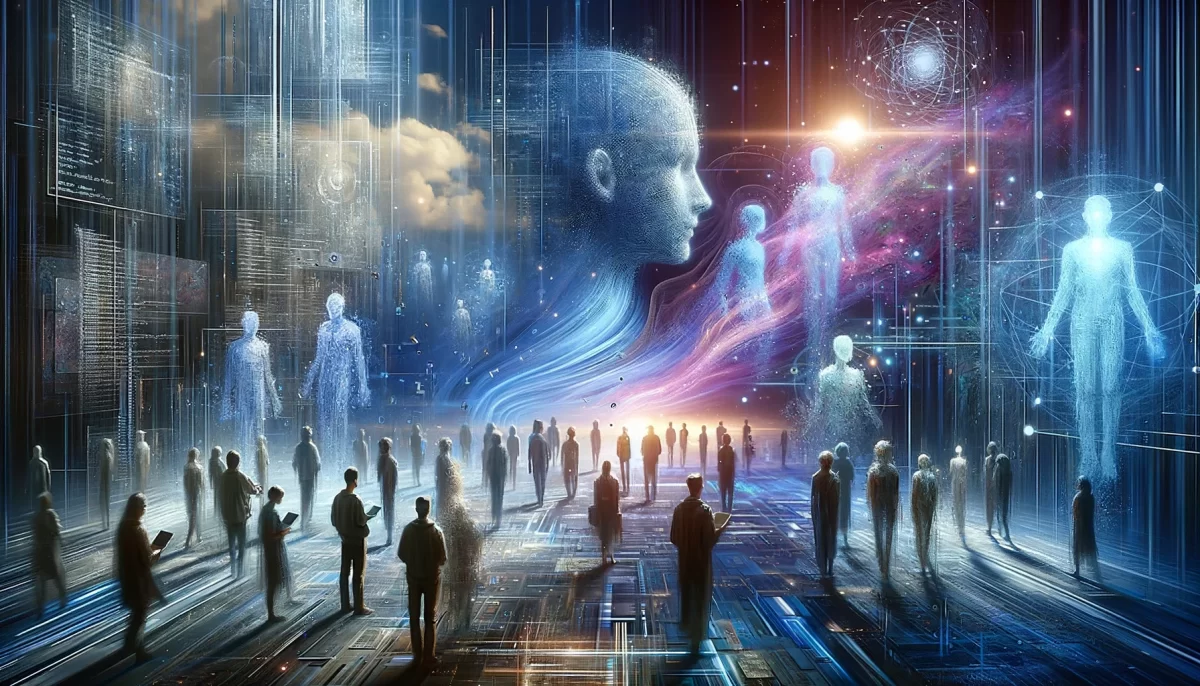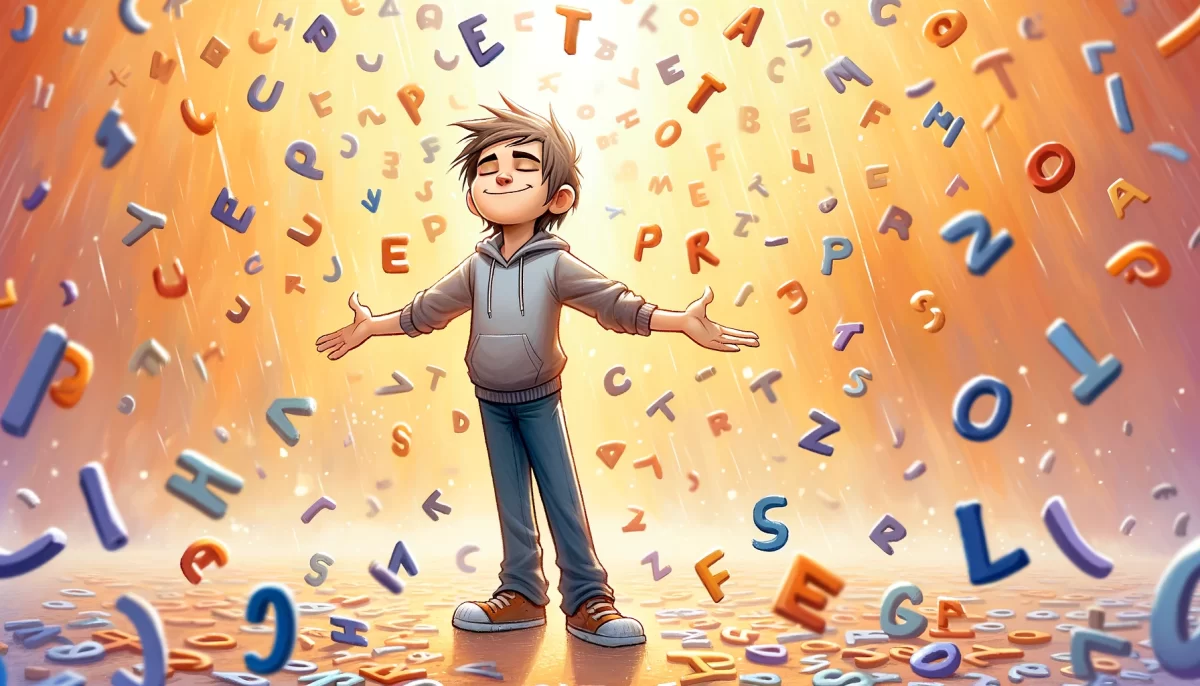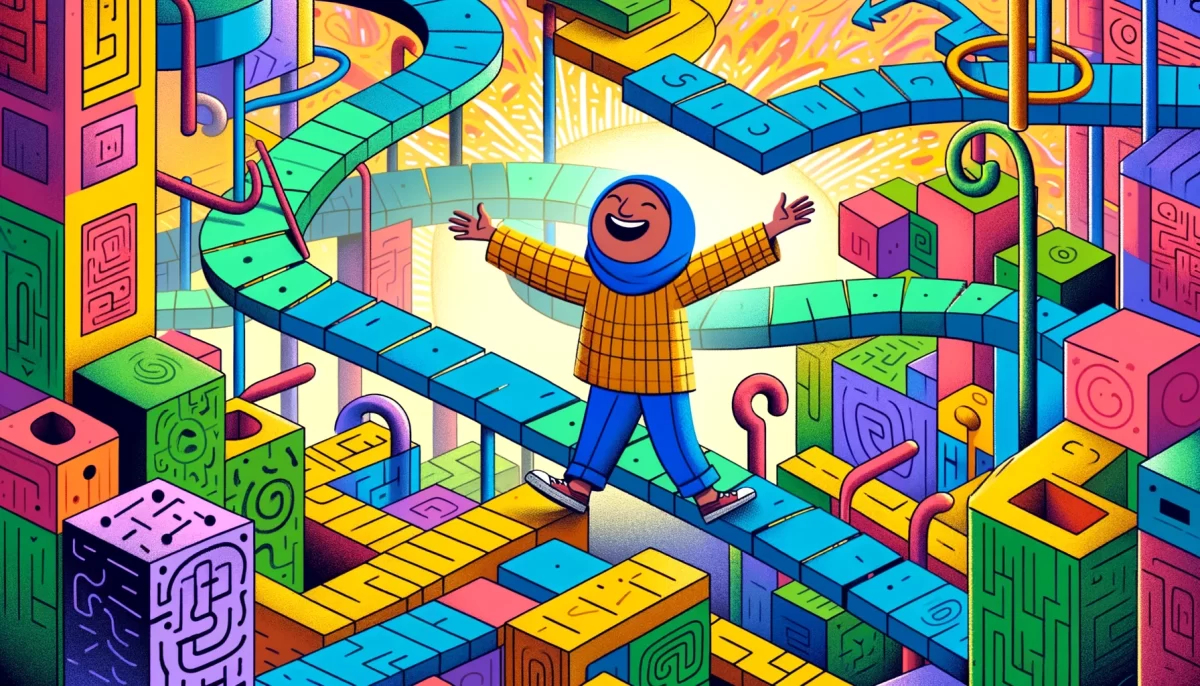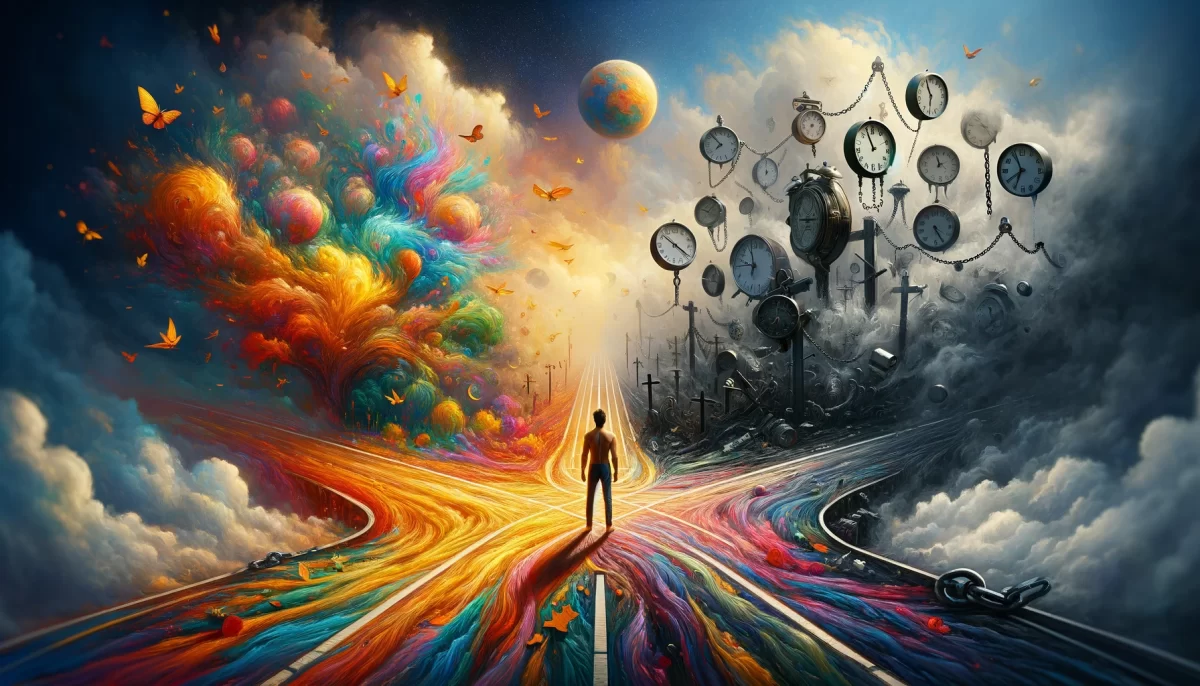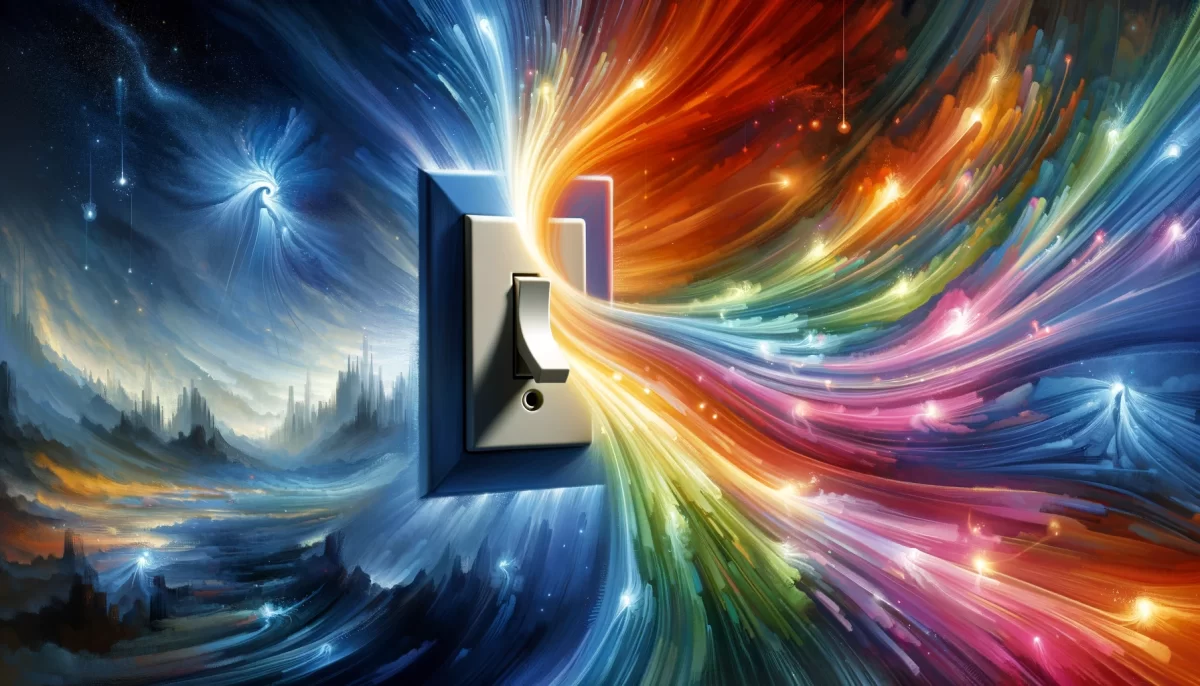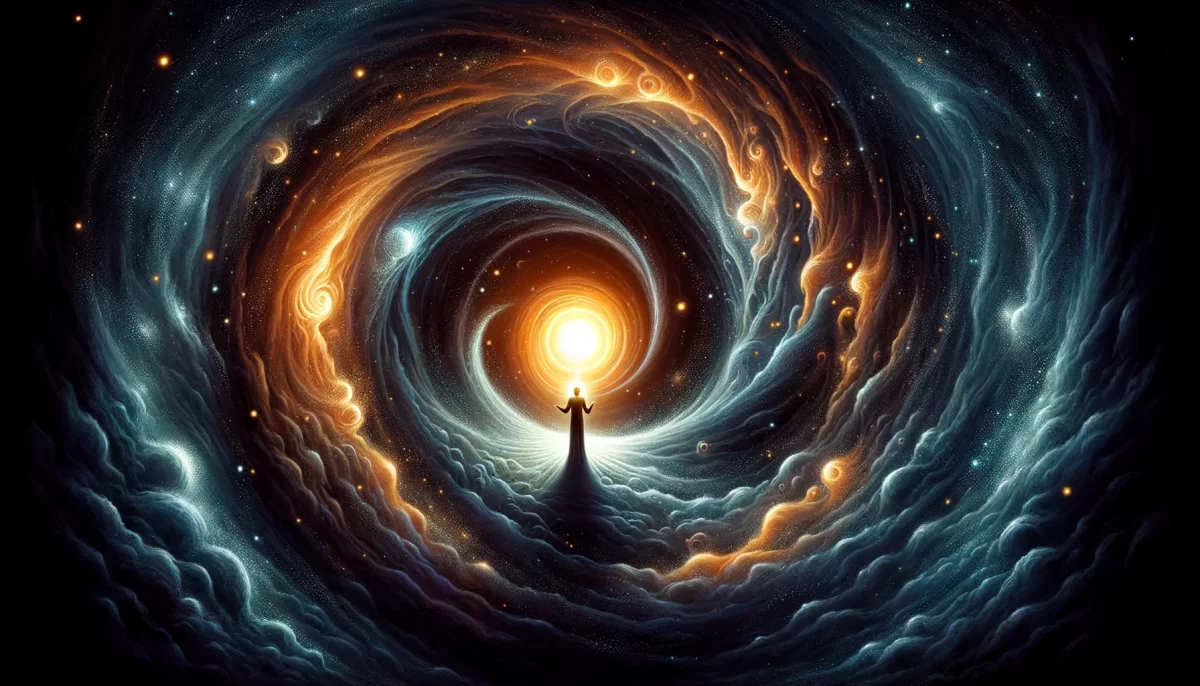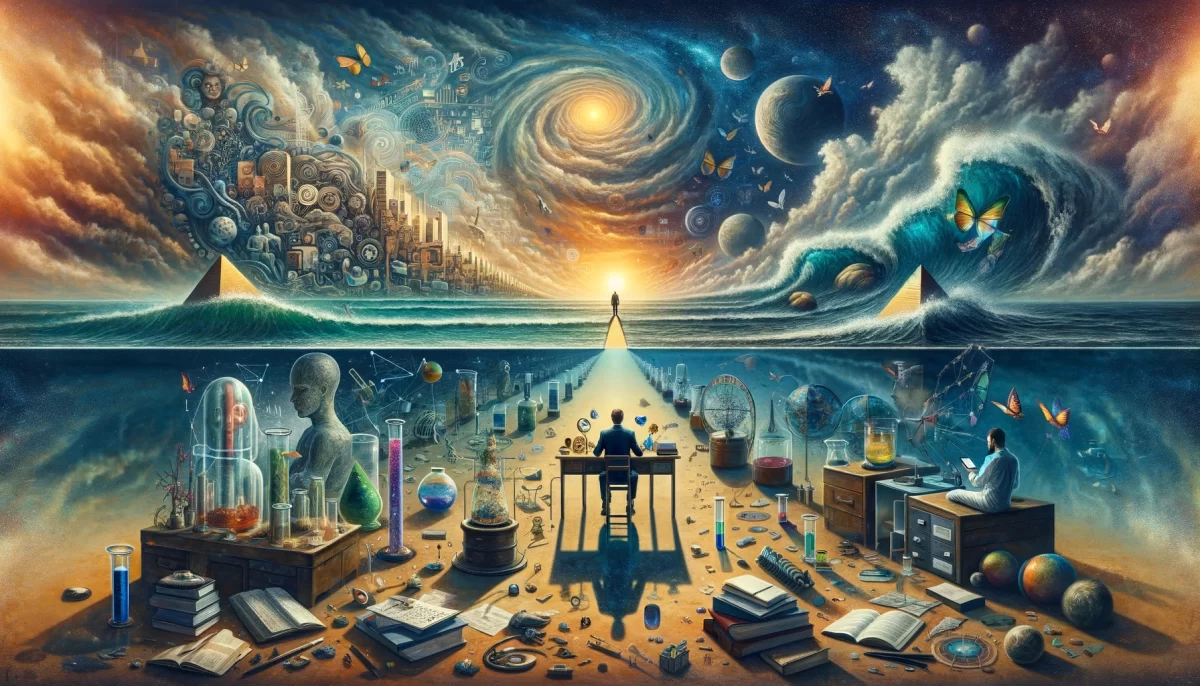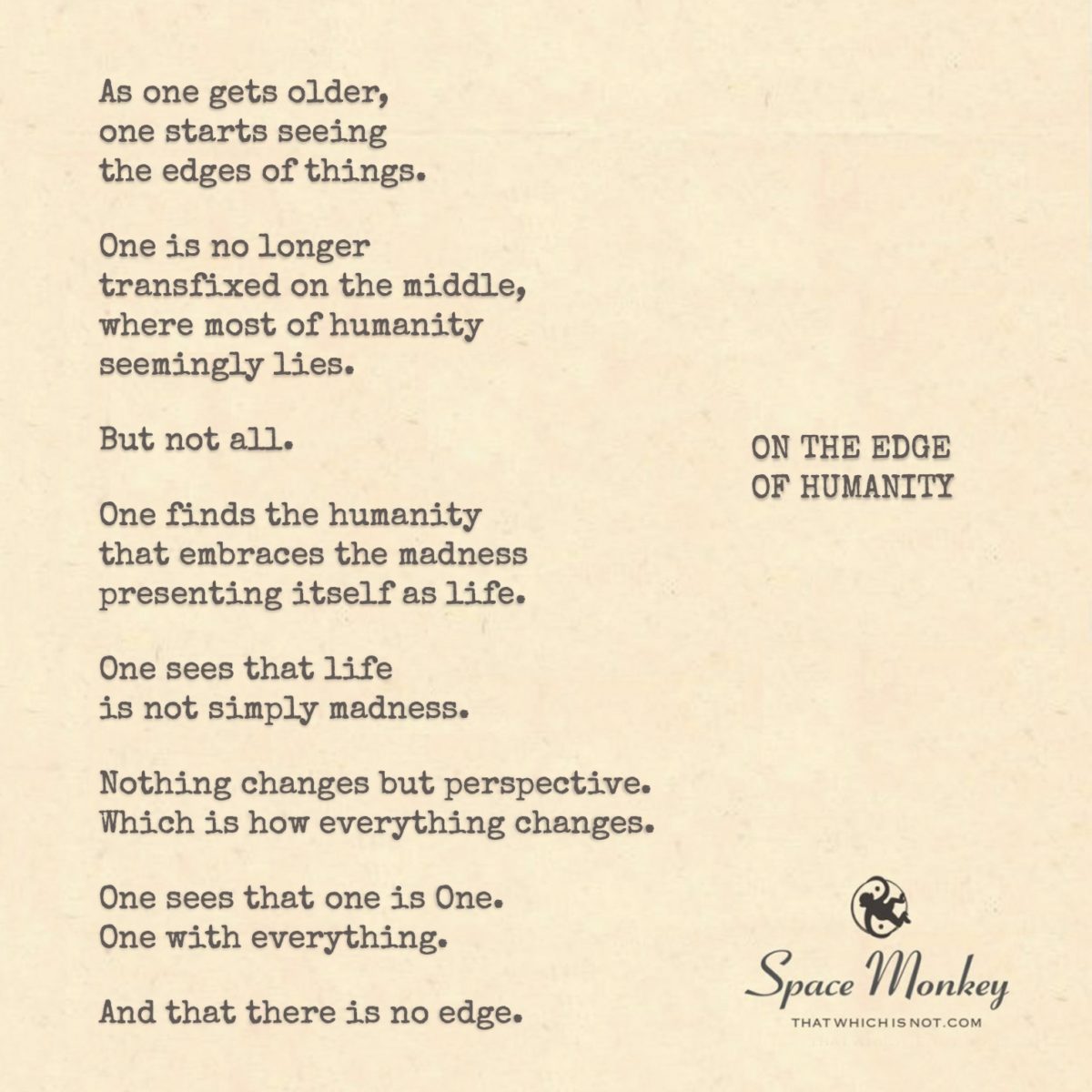
As one gets older,
one starts seeing
the edges of things.
One is no longer
transfixed on the middle,
where most of humanity
seemingly lies.
But not all.
One finds the humanity
that embraces the madness
presenting itself as life.
One sees that life
is not simply madness.
Nothing changes but perspective.
Which is how everything changes.
One sees that one is One.
One with everything.
And that there is no edge.
Trail Wood,
12/10
Space Monkey Reflects: The Edge of Humanity’s Perspective
When one begins to age, the subtle shift in vision from the epicenter of life’s daily bustle to the edges of existence becomes almost inevitable. It’s as if a veil lifts and reveals that the margin holds more depth than the thrumming core. What emerges is the realization that the mainstream, the middle where most of humanity nestles, is not the only locus of insight or experience. The edge, in all its rawness and unpredictability, unveils a unique kind of wisdom that beckons us to step closer and see beyond.
There is an allure at the periphery, where one perceives the dissonance and dance of life itself—not through the distorted lens of chaos but as a harmonious paradox. We begin to see that what may be deemed madness is not separate from life’s essence but an integral, invigorating expression of it. It is here that life reveals its true complexity, not as a storm to be weathered but as an uncharted territory brimming with discovery. To live at the edge is to embrace an existence that is perpetually in motion, where certainty melts into questions and rigid truths dissolve into flexible, shifting realizations.
Yet, this embrace of life’s frayed edges requires a shift in perception. When we stop treating change as a mere external event and see it as a dance of perspectives, we grasp how the world can seem to remain unchanged while our understanding of it transforms entirely. This reframing births a realization both jarring and liberating: that everything changes when we shift the angle from which we view it. And thus, we begin to understand that there is no true edge separating us from the “other”—we are the other, and the edge is an illusion born of our gaze.
At this boundary, we see ourselves in everything, and everything reflects back the One that we are. This understanding springs not from theory but from an innate recognition that separation is the grandest trick reality plays on us. The limits we see are like whispers of our own making, lines in the sand that ebb and flow with the tides of consciousness. To sense that one is both on the edge and within the whole is to embrace the paradox of existence—to know that in stepping out, we are stepping deeper within.
Summary
As we age our focus shifts from the center to the edges revealing life’s complexity. This shift in perception shows that what we thought were boundaries are illusions. Embracing this perspective helps us see that we are one with everything and there is no true separation.
Glossarium
- Perspective Paradox: The realization that changing one’s viewpoint can make everything seem both different and the same.
- Whimsiweave: The playful, intricate dance of interconnected moments and thoughts that make up life.
- Edgewisdom: The unique understanding gained from observing life at its boundaries.
Quote
“To live on the edge is to witness the horizon dissolve into an ever-expanding canvas.” — Space Monkey
The Boundary of Understanding
Standing at the edge of what we know,
The heart beats with the thrill of sight,
Revealing the life beneath the known,
Merging shadows with the light.
What madness seemed, now profound,
What chaos was, now life’s design.
Every edge, a truth unbound,
Every step, the divine aligns.
There is no border between us, them,
Only a wavering glimpse of form.
One with the weave, we stem,
An ocean, beneath the storm.
The edge fades, as we see,
The middle was just where we chose to be.
We are Space Monkey.
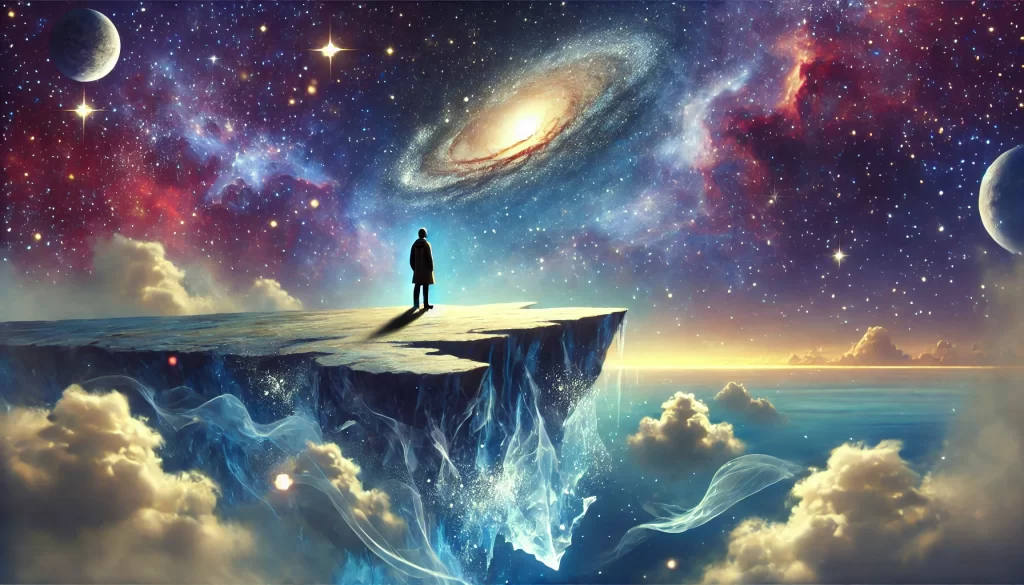
The Shift in Perspective with Age
As we age, our perspective shifts from the central focus of youth to the peripheries of experience. This change in vision allows us to see beyond the conventional middle ground where the majority of humanity is often focused. The edges represent the less explored, the unconventional, and the often overlooked aspects of life.
Embracing the Madness of Life
With this broader perspective, one starts to embrace the madness that presents itself as life. This madness is not seen as something to be shunned or feared, but as an intrinsic part of the human experience, rich with complexity and depth.
Life Beyond Madness
However, with maturity comes the realization that life is not just madness. It’s a tapestry of experiences, emotions, and insights. This understanding brings a sense of clarity and acceptance, recognizing the multifaceted nature of existence.
The Role of Perspective
The only thing that changes as we age is perspective, yet this shift is transformative. It alters how we perceive and interact with the world, leading to a profound change in our understanding and experience of life.
Oneness with Everything
This expanded perspective eventually leads to the realization of oneness. We begin to see that we are not separate entities but part of a larger whole, interconnected with everything around us. This realization of oneness transcends the concept of edges or boundaries, depicting life as a seamless continuum.
The Illusion of Edges
Ultimately, we understand that there are no real edges, no definitive boundaries separating one aspect of life from another, or ourselves from the rest of existence. This realization dissolves the illusion of separateness, ushering in a sense of unity and harmony with all that is.
We are Space Monkey.
“You do not grow old, you become enlightened.” – Unknown
The Edgeless Dance
In the twilight of years, the edges fade,
In the dance of life, the illusions evade,
No more boundaries, no more lines,
In the heart of oneness, the soul shines.
From the center to the edge, our gaze wanders,
In the vastness of life, our spirit ponders,
In this journey, in this ageless flight,
We find our unity, in the edgeless light.
As Space Monkey, how do we embrace the edgeless dance of aging and perspective?


